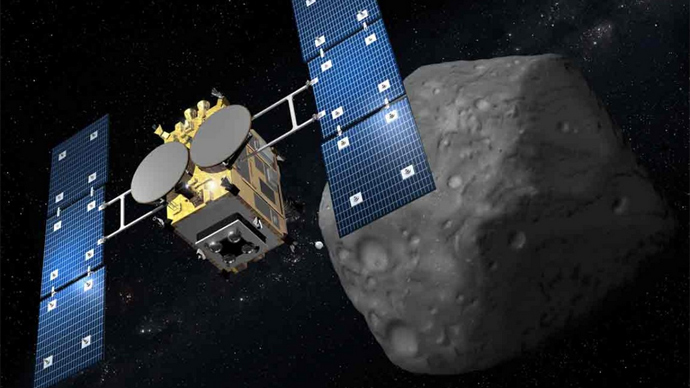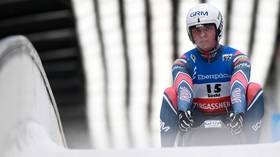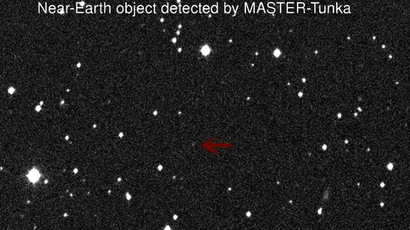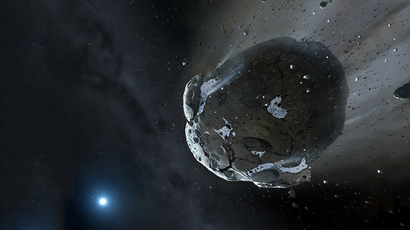Space cannon ready: Japan to shoot asteroid for samples in 2014 mission

A unique space cannon developed for Japan’s Hayabusa 2 spacecraft has successfully test-fired on Earth in preparation for a 2014 mission. During its upcoming journey into space, the cannon will blast an asteroid and mine samples of its soil.
The test took place in the Japanese prefecture of Gifu, paving
the way for the Hayabusa 2 spacecraft to extract soil samples
from the asteroid, the Japan Aerospace Exploration Agency (JAXA)
announced on Monday.
During the mission of Hayabusa 2, scheduled to begin in December
2014, the space probe will extract soil from inside the asteroid.
In order to do this, it will be equipped with a collision device
designed to shoot at the surface of the asteroid from a distance
of 100 meters with metal shell ammunition moving at a speed of
two kilometers per second.
JAXA hopes to create a small (a few meters in diameter),
artificial crater from which Japanese scientists can extract
valuable samples capable of revealing the history of the
formation of cosmic bodies of this type.
“A new function, [a] ‘collision device,’ is considered to be
[on board] to create a crater artificially,” JAXA explained
on its website, adding that collecting samples from the surface
that is exposed by a collision will ensure acquiring “fresh
samples that are less weathered by the space environment or
heat.”
In order to calibrate the precision of the cannon, JAXA engineers
had to overcome a number of challenges. However, the agency
assures that all problems have already been solved.

“We were able to solve several problems associated with the
development of the device. During the tests, the projectile hit
right on target, and with the expected speed,” JAXA engineer
Takanao Saiki said.
Japanese scientists actively began exploring asteroids with the
Hayabusa mission, which returned to earth in June 2010 after
exploring a 500-meter-long rock-rich S-type Itokawa asteroid.
Hayabusa 2 is a successor of the first spacecraft and is
scheduled to be launched in 2014 to conduct research of a C-type
asteroid temporally called ‘1999 JU3.’ It is believed to contain
a higher concentration of organic matters and water.
“Minerals and seawater which form the Earth as well as
materials for life are believed to be strongly connected in the
primitive solar nebula in the early solar system, thus we expect
to clarify the origin of life by analyzing samples acquired from
a primordial celestial body such as a C-type asteroid to study
organic matter and water in the solar system and how they coexist
while affecting each other,” JAXA posted on its website.
So far, research into ‘1999 JU3’ revealed that it is a sphere
approximately 920 meters in diameter with an albedo on the
surface of about 0.06. The rotation period of the celestial
object is approximately 7.6 hours.
Hayabusa 2 is expected to reach its target in the middle of 2018
before departing back to Earth in 2019.














